The 20%
Immigrants and refugees make up one-fifth of people in Canada. Why are so few reporters telling these stories?
Nicholas Keung’s shirt was soaked in sweat. His phone intermittently buzzed with emails from his editors—but nothing from the woman he was waiting to interview about her brother’s mysterious death six days earlier at a Peterborough, Ontario, hospital while in the custody of immigration authorities. The Toronto Star reporter had been outside the woman’s high-rise apartment building on that hot mid-June morning since their scheduled interview time at 9:30. He called once, twice, half a dozen times. No one answered. He left voice messages. “I’m still downstairs.” At 10:45 a.m., she called. “We still need more time,” she said. “I’ll call you again when we’re ready.” Her mother had forbidden any contact with journalists because she was concerned about the stigma the family might face if someone reported that her son lived with bipolar disorder and diabetes. “We’re very private,” said the sister.
Two hours passed as Keung waited in the parking lot with his car windows down. He contacted the lawyer who had tipped him off about the family. At 11:30 a.m., the woman cancelled. “We can’t talk to you.”
Back at his office, Keung kept trying to convince her to go on the record. Perhaps, the detainee’s sister suggested, her mother—who didn’t speak English—didn’t have to know?
Six hours after their original appointment, she spoke with Keung for an hour. As an immigration reporter for the Star, he is familiar with this will-they-or-won’t-they-give-an-interview scenario. It makes producing nuanced coverage harder for journalists who must overcome language and cultural differences, as well as systemic restrictions.
Keung identifies as Canada’s longest-serving immigration reporter in an industry struggling to cover the 20 percent of the national population that is often overlooked in the news—at least in terms of immigration-specific issues and policies. He’s working against a legacy of stories that merely hint at the layers of complexities in the lives of Canadian immigrants and refugees.
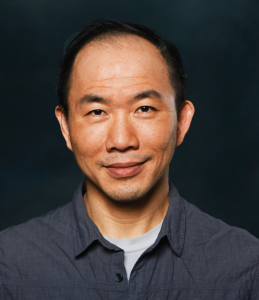
In over 10 years at the Toronto Star, Nicholas Keung has faced the challenges of covering immigration: finding willing sources, navigating bureaucracy and communicating through cultural barriers. But it’s worth it to report on immigrants and refugees. Photo by Laura Arise
Keung, who’s originally from Hong Kong, has been holding the lonely mantle of “immigration reporter” since 2003, when the Star made it an official beat. Before that, immigration coverage mostly meant stories about cultural festivals or personal success stories of integration and adaptation. But these individual narratives lacked context. In the 1990s, much of the reporting was shallow (the Star’s “Immigrant loses in marriage quiz,” for example, describes an immigrant couple’s ordeal with “a scary version of The Newlywed Game”) or simple, such as Q & A stories with titles like “Immigrant uneasy about parents must still wait in line for passport.” These stories merely scratched the surface. “Parades and costumes,” says John Ferri, a former Star reporter and editor. “The coverage in the ’90s was blinded by this filter that was well-intentioned, but not enough.”
Journalists celebrated diversity without deeply covering the nuances of multiculturalism. Haroon Siddiqui, former editorial page editor at the Star, recalls how budget-day coverage was always about how the changes would affect a white family. He also remembers an article about how Markham, a city in Toronto’s suburbs, didn’t look like Markham anymore due to its growing population of visible minorities, at 72.3 percent in 2011.
Both Siddiqui and Ferri were part of an internal Star committee that produced a 1995 report recommending changes to the editorial process to include more cross-cultural journalism. “There was a realization that we needed to cover the city the way it is,” says Siddiqui. “Those of us who don’t understand should stand in front of Union Station at eight in the morning and five in the evening and just see the human tide that wasn’t being reflected in the paper.”
Over the course of the ’90s, coverage increased as more people immigrated to Canada. “People didn’t realize this was an extraordinary beat,” says Siddiqui. Now, the reporting is more likely to be based on statistics or policy: how many new applications will be accepted, how many people are still stuck in the backlog, how many foreign workers will be deported and, lately, how many refugees the country can and will accommodate.
But there is no one universal immigrant experience. Stories about immigration provide a human-level window into everything from wars to gender inequality. “In many ways, diverse voices are being heard louder than before,” says Judy Trinh, a CBC reporter who came to Canada as a refugee from Vietnam. She says this shift is thanks to social media. “The concern is, are we covering those voices well?”
It’s not just “parades and costumes” anymore, but there are great challenges in reporting on a system riddled with complexities, nuances and a diversity of languages, cultures and experiences. “In an ideal world where all these issues were important enough, we would have more reporters,” says Andrew Griffith, author of the book Multiculturalism in Canada. General assignment reporters continue to handle most of the coverage, writing one-off stories on policy changes or profiles of cases they learned about in press releases.
When Jason Kenney, former immigration minister, said refugees get “gold-plated” health care, reporters “became his handmaiden” and repeated the phrase without analysis, says Peter Showler, a former chair of the Immigration and Refugee Board of Canada. The “subliminal consequence” of such reporting is that coverage becomes unwittingly negative, says George Abraham, founder of New Canadian Media, a website dedicated to presenting an immigrant point of view for all Canadians. Journalists should instead be reporting the lived experiences that give context to the official narrative of immigration policy.
Last year ended with two big stories: by-the-numbers coverage of the federal Liberal government’s refugee plan and triumphant stories about an Ottawa couple winning a three-year struggle to bring their four-year-old son to Canada from India. Journalists cover immigration in two extremes: “It’ll all be hearts and flowers and violins on individual coverage,” says Showler, or mundane, meaningless facts and numbers in policy coverage.
Douglas Todd, a migration, diversity and spirituality writer for the Vancouver Sun, says reporters and editors are afraid to go deeper because of cultural sensitivities. “They don’t want to touch it, they don’t want to make a mistake and they don’t want to offend anyone,” he says. Yet 44 percent of Vancouverites are foreign-born, and the news isn’t covering their stories. “So how can that not be a gigantic issue?” says Todd. Three-fifths of his interview subjects are from minority groups, whereas he thinks the proportion is much smaller for other journalists.
Last June, Todd wrote a three-part series about Richmond, the fourth-largest city in British Columbia, where 60 percent of the residents are immigrants. This has physically changed the city—according to Todd’s article, there are more than 50 Asian malls and outlets in an area where, 30 years ago, there was a cluster of forgotten one-storey commercial buildings and parking lots. “Get beyond clichés,” says Todd. “Go for depth, context, background, census data, fairness, polling data, balance, realism and in-depth profiles.”
Yet, part of the problem is that readers don’t have the same level of shared knowledge about immigration as crime, education or public transit. Sometimes, by the time Keung has explained how the system works, he has used up 200 words, leaving little space for the actual story.
Four words in a press release about a dead detainee made Keung wait in that parking lot for over two hours: “On June 11, 2015, the Canada Border Services Agency (CBSA) was notified by the Peterborough Regional Health Centre that an adult male detainee who was receiving care, passed away in hospital.”
The four words: Canada Border Services Agency.
A flow chart of questions appeared in Keung’s head. If a regular inmate had died, it wouldn’t have been a CBSA press release. That meant the detainee must have violated immigration law. Why was he receiving medical care, though? Was there a confrontation? What caused his death? What was his name? Keung knew this was a serious and complex case. He picked up the phone.
From an earlier press release from the Special Investigation Unit (SIU)—an agency that investigates incidents involving police where there has been death, serious injury or allegations of sexual assault—he knew the “adult male detainee” was 39 years old. Keung says the CBSA declined to give him any more information: “The man’s identity will not be released at this time.” He learned that there were two officers on the detainee’s detail, and that the man had become agitated and had to be restrained by officers and health professionals. No name.
In the ’90s, any hard news about immigration was often about floodgates and fraud: there were too many coming in, and they were coming in illegally. “This was always a false issue to a very, very large degree,” says Showler. “The media was very complicit in that and quick to buy into it.” As time passed, “bogus refugee” became a common term for people claiming asylum upon arrival without proper paperwork. This perpetuated a fear-inducing narrative that all refugees were fraudulent, as did restrictive refugee health care laws passed by the Harper government in 2012. Op-eds by doctors, students, professors and lawyers specializing in refugee issues—rarely by journalists—countered this narrative. And, of course, after 9/11, the focus of immigration coverage had also changed, from multiculturalism to national security.
The arrival of Syrian refugees in 2015 is, according to Showler, “a tale of two stories.” The photo of three-year-old Alan Kurdi lying dead on the beach is the first; the ISIS attacks on Paris is the second. “The two opposing stories appear alongside one another every day in the media and across dinner tables,” wrote Showler in an op-ed for the Star. In the first, Canadians are sympathetic and eager to help desperate refugees. In the second, sympathy becomes suspicion, and people believe extreme caution should be exercised in vetting the 25,000 Syrian refugees the Liberal government vowed to bring to Canada by this spring. The same two narratives existed in the news about “bogus refugees.” Showler says that pattern started to change when Syrian refugees began to arrive last December.
To move past these two extremes, Joe Friesen, demographics reporter at The Globe and Mail, suggests immigration should be covered in the business pages, in court coverage and in local politics news, not just by immigration reporters. “Immigrant issues are part of a lens through which a journalist sees every story, to look at everything in the way it affects different demographics,” he says. Changes to citizenship laws, for example, affect immigrants especially, but also citizens with dual nationalities. So do you let them be covered by an immigration reporter or a national affairs reporter? “I think when the day comes when we don’t even need this beat, it will be the ideal,” says Keung. He believes there will always be a need for someone to cover policy, but newsrooms shouldn’t need a special reporter for other aspects of immigrants’ lives. When that distinction no longer exists, he says, that’s when immigrant issues will become everyone’s issues.
“This is the dead man whose name nobody wanted you to know,” reads the lead of Keung’s story, published exactly a week after the official announcement of Hassan’s death. The same day, another of Keung’s articles came out, about a University of Toronto study that called the immigration detention system “a legal black hole.” According to the research, Canada was in breach of international human rights for routinely, and sometimes indefinitely, holding migrants with mental health issues in maximum-security jails.
In 2013, several news outlets reported that Lucia Vega Jimenez, an immigrant from Mexico, took his own life while imprisoned in Vancouver. Almost a month after his story on Hassan, Keung wrote about a United Nations report that condemned the indefinite length of immigration-related sentences in Canada. Eighty- eight inmates at the Central East Correctional Centre in Lindsay, Ontario, where Hassan had been held, also signed an open letter demanding a public inquest into his death. “We still don’t know what happened on that day,” says Keung about Hassan’s death.
According to some of the inmates, events moved quickly, and it was all over in 24 hours—something Keung could not verify.
Anonymous sources, he says, are the biggest challenge facing anyone writing about immigration. Vancouver Sun reporter Tara Carman, who often writes about immigrants and refugees, says her subjects’ wishes to remain anonymous have prevented her from reporting a lot of their stories. “Some people have a lack of status,” she says, “or a lack of media knowledge or just a fear of speaking out.”
“The stakes are very high,” says David P. Ball, a reporter with The Tyee who covers several social issue beats including immigration. “If you screw it up, you could get someone deported.” In 2014, he wrote a story about undocumented immigrants in British Columbia. It was one of the first times the issue had been covered in that province, though Keung had previously written about it in the Star. Ball found a father of two from Mexico who was working illegally in Vancouver’s construction industry. He lived in a building that was about to be demolished and taught his kids English when he wasn’t at work—the children were denied access to school after their parents could not provide proof of citizenship. “It was really powerful to meet him,” says Ball, “and really challenging to verify any part of the story.”
As Keung says, sometimes finding and talking to someone on the record who can illustrate specific immigration issues can feel like searching for “a one-eyed, lesbian, Muslim, hijab-wearing, immigrant woman”—seemingly impossible.
Reporting on refugees and immigrants means facing complex legal and systemic roadblocks. Lawyers have to get approval from their clients before they can talk. And the lawyers must factor in the sway that news coverage may have on the case and how it may result in deportation. That’s only in the cases that lawyers choose to take to the press. The authorities overseeing refugee cases, for instance, are opaque institutions, hiding behind a veil of vague press releases. In these cases, everything is confidential, but most of it is also accessible by those willing to go through onerous application processes. Some cases go on to federal court, where the information becomes public, for those journalists inclined to go beyond press releases.
Under Stephen Harper’s government, Citizenship and Immigration Canada (CIC) made it more difficult to find useful information. Statistics, like where immigrants are coming from, that used to be presented by country became vast regional break-downs—not much help when the three biggest countries that B.C. immigrants come from all fall under “Asia.” Getting more useful data required an Access to Information request, which meant more red tape. “These are not exactly state secrets,” Carman wrote in an op-ed. “It’s hard to see how having that information in the public domain, as it has been for years, compromises security or privacy.” Under the new government, Carman got the information at no cost. But under Harper, the CIC informed her that the cost to access the information would have been $1,600 per hour of research time.
In the days after Hassan’s story ran, Keung kept following up on the investigation into the case. These were weekly conversations. Then every two weeks. “It was a fishing mission,” he says. To illustrate a systemic failure, you have to show a trend. To show a trend, you need to have concrete examples of people affected. To get names that haven’t been in the news before, you have to cut through a lot of red tape.
Starting in July, Keung spent five to six weeks looking for immigration detention cases involving a former or current detainee that exposed systemic issues. A lawyer came forward with two cases, both with clients who struggled with mental health. One had a guardian who wouldn’t provide consent and couldn’t be written about. Another lawyer, from Ottawa, had been trying for a long time to help a family and called Keung as a last resort. A different case about an immigrant detainee being held in a solitary cell came through the friend of yet another lawyer.
After Keung submitted one of the stories in the series, his main source—who faced a 62-month detention—withdrew consent. While Keung could have still used the story, he chose to shift the focus, looking at the efforts of his source’s lawyer instead. Eventually, the man relented.
Between August and the end of 2015, the immigration detention series and six more Keung stories sat on file, unpublished. The six pieces ranged from articles about temporary foreign workers to a profile of a Colombian immigrant painter who works out of his basement (which ran on January 14). But it was a busy time for news: a federal election was underway, Rob Ford started chemotherapy and the Blue Jays were in the playoffs. So, Keung’s immigration stories stayed put. “It’s frustrating because I have to keep updating the stories,” says Keung. He has to answer phone calls from sources asking when pieces will run or providing new information that he needs to add.
One of the featured images for the immigration detention series was a photo of advocates from the End Immigration Detention Network protesting outside the Lindsay prison where Hassan had been held. It’s a summer day in the picture. But summer turned into fall, and winter was coming.
The series, titled “Prisoners in Purgatory” online, finally appeared in print on December 4, 2015, in the GTA section of the Star. “Immigration detention is a world shrouded in secrecy, where people Canada doesn’t want are locked away, sometimes for years,” read the subhead of one story.
There’s an old, slightly blurry picture of a smiling Hassan. “His lengthy detention—and death—has sparked a debate over Canada’s immigration detention system, which involves a myriad of government jurisdictions in what critics call ‘a legal black hole,’ with little transparency and accountability,” wrote Keung. When it appeared, the series was one of the most read on the website. And less than two weeks later, a Somali man was ordered released after 67 months in immigrant detention “in an extraordinary and significant decision,” according to Keung’s story on him. “Media attention possibly helped,” the reporter said later. “It makes them nervous.”
On December 9, 2015, Keung received the Mary Deanne Shears Award for Outstanding Reporting at the Star. “In one of the worst refugee years in modern history, Nicholas has relentlessly kept on top of the challenges for refugees and immigrants to Canada,” wrote managing editor Jane Davenport in an email to staff, “and the government bungles (or deliberate misrepresentations) that have resulted in deportation and discrimination for too many.”
A testament to Keung’s relentless coverage of immigration issues is the number of stories he files. One article, published in November 2015, was about eight foreign workers stuck in an application backlog for permanent residency. Some were forced to return to their home countries after their visas expired because of the wait. The headline Keung used in his draft, bolded in big, black type, read, “We feel we’ve been forgotten.”
March 28, 2016: A previous version of this story failed to give David P. Ball’s full name and place of employment. The Review regrets the error.
by Fatima Syed
Fatima Syed is the blog editor of the spring 2016 issue of the Ryerson Review of Journalism.



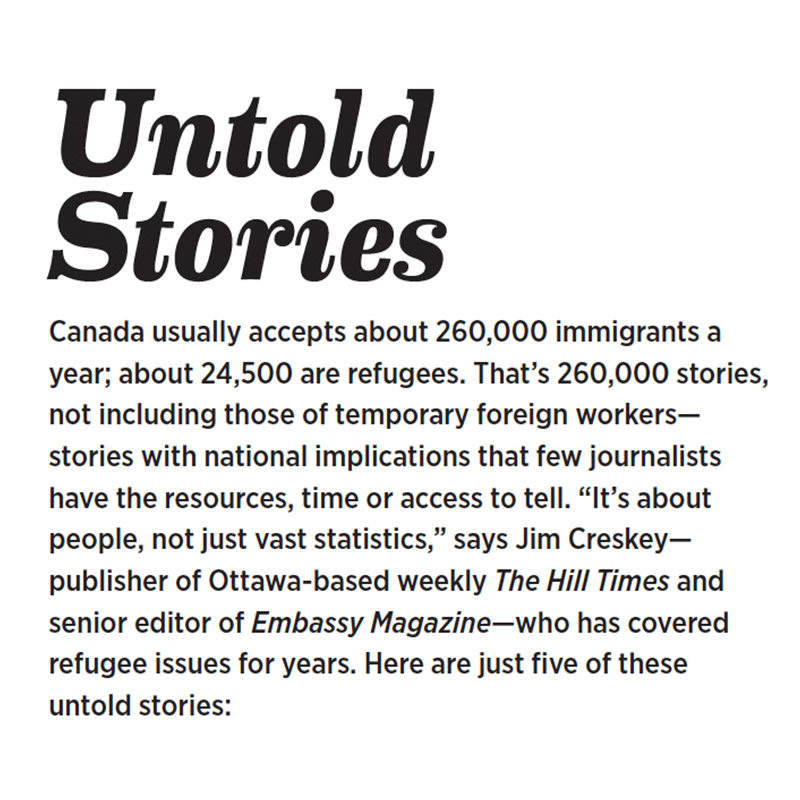

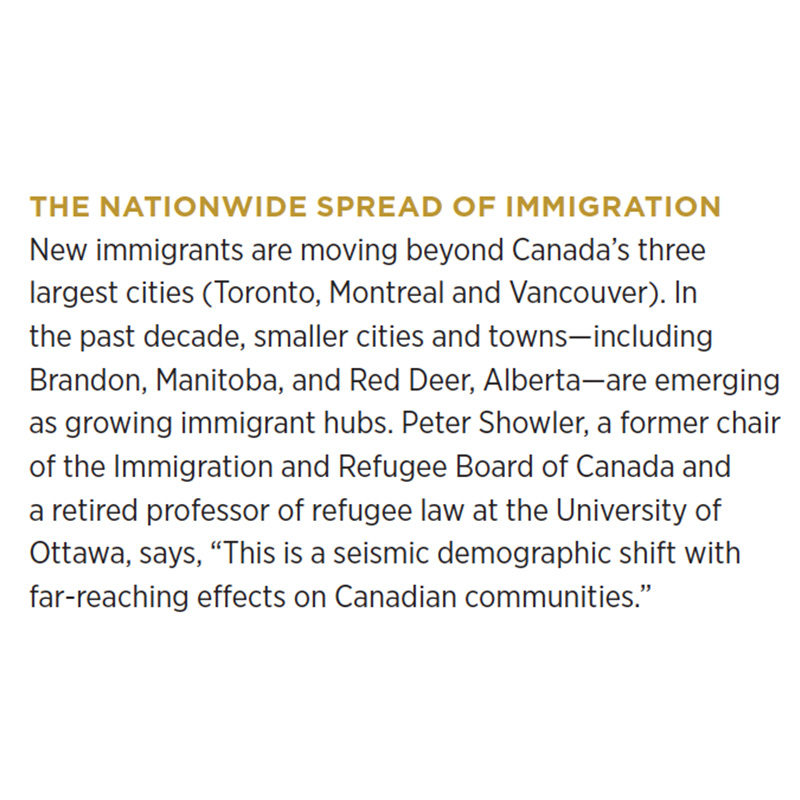

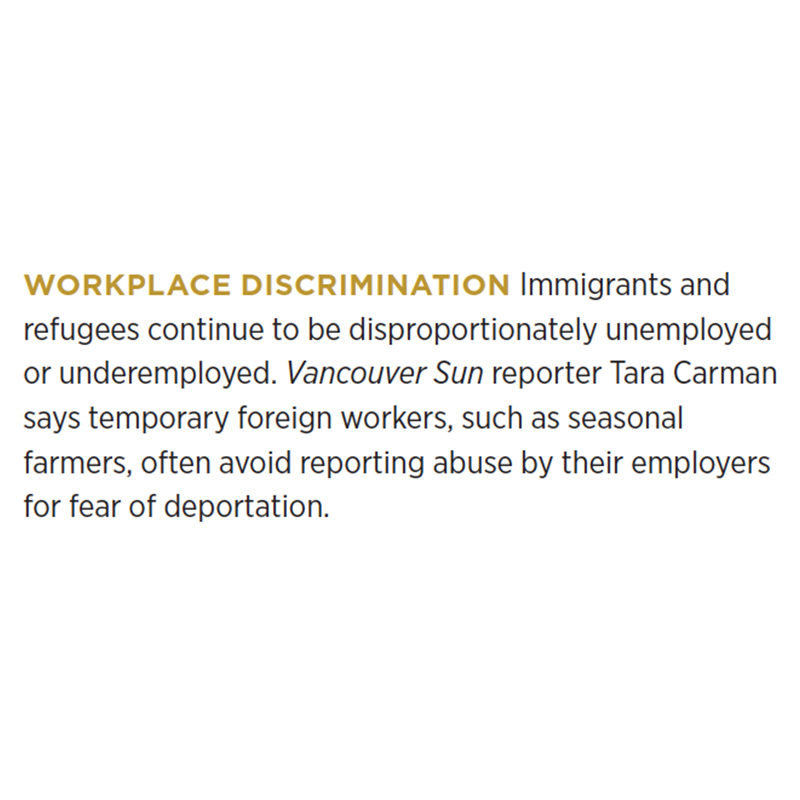

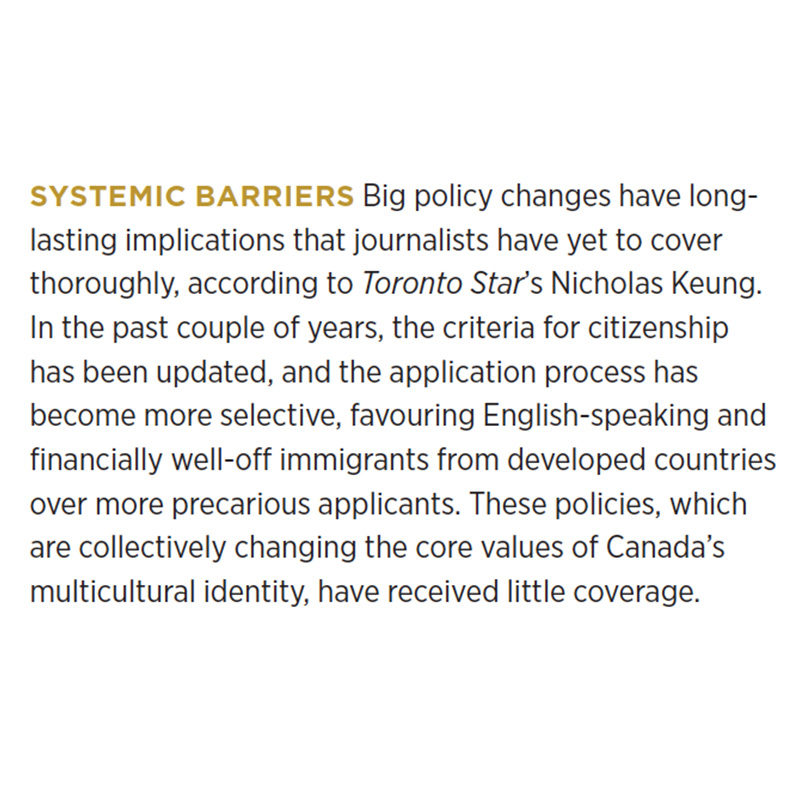

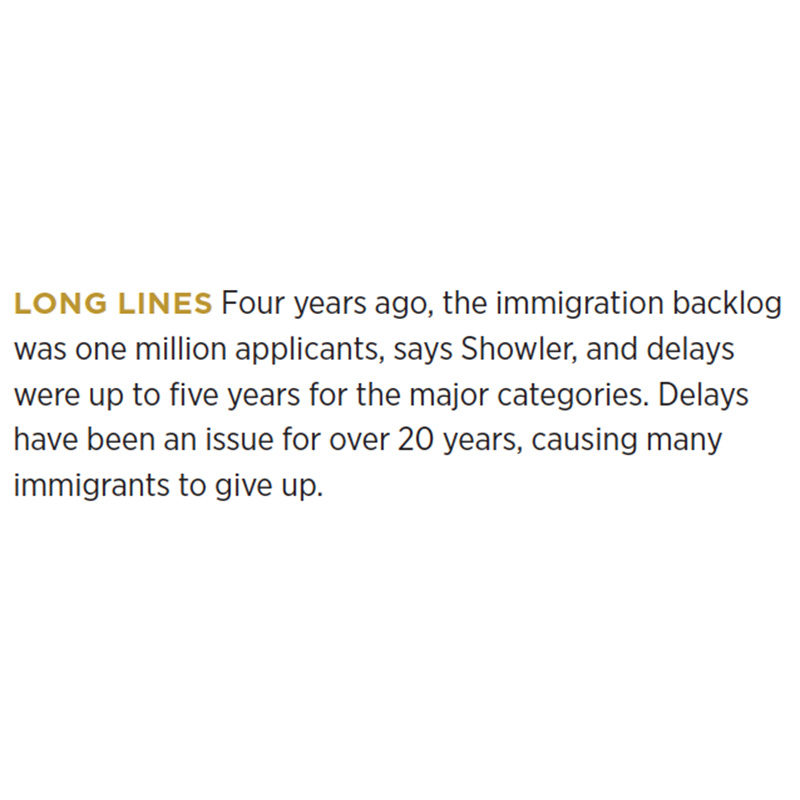

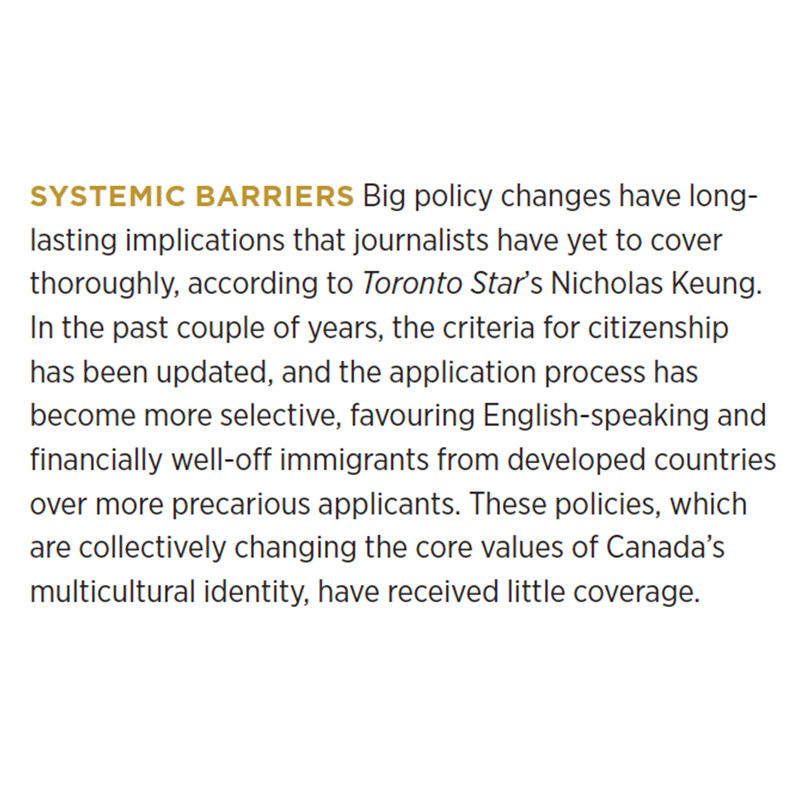












































It is unclear what is meant by the “systemic roadblocks” or “systemic restrictions” in the piece – but how can you have a discussion around the “parades and costumes” superficiality of mainstream media in Canada and not once mention race or racism – given their real consequences in peoples lives !? The article inadvertently services Canadian avoidance of that conversation – sure 20% of Canadians are newcomers – but 25% are racialized (First Peoples + peoples of colour) !!